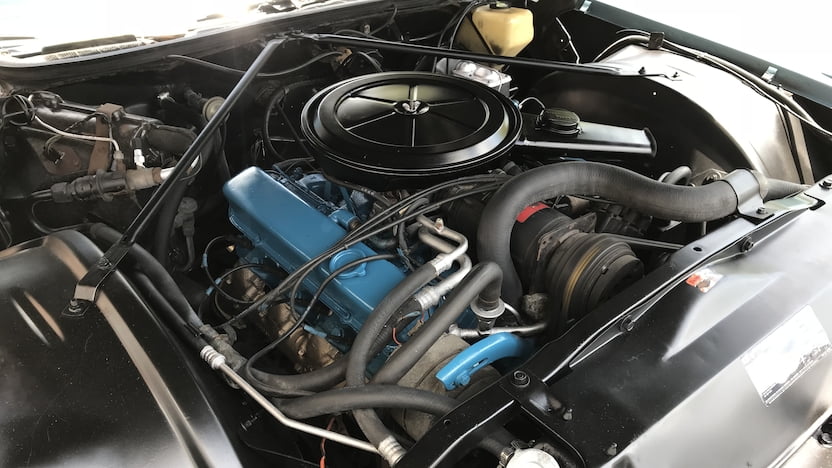Media | Articles
1971–78 Eldorado: The end of the big-block Cadillac convertible
The 1970s were a time of change in the automotive industry. Under pressure from new emissions regulations, Detroit scrambled to turn muscle car motors into fuel sippers. The largest cars took the brunt of the new changes, as they represented the biggest offenders. By the late 1970s most of America’s big, brawny cruisers were downsized into angular, three-box sedans that were lighter, more nimble, and more efficient. Sadly, those models of efficiency lost some of the unrestrained panache of their predecessors, and thus the last generation of massive luxo-cruisers is much more special. One of our favorites is the ’71–’78 Eldorado.
Cadillac was the first company to mass-produce V-8 engines and during the 1970s, they also made some of the biggest cars on the market. So it only seems fitting that they also built the largest production V-8 engine ever shoehorned into a car—a 500-cubic-inch monster. The 500 was the sole engine choice in the Eldorado until 1977, when a 425-cubic-inch version took its place. It was never really a hot rod engine in ninth-generation Eldorado, thanks to a reduction in compression ratio from 1970’s 10.0:1 to 1971’s 8.5:1, though the displacement naturally brought effortless torque. While horsepower dropped from 400 in 1970 to 365 in 1971, torque fell only slightly, from 550 lb-ft to 535. However, as output measurements transferred from gross to SAE net, the bottom dropped out of the power ratings. By 1976, the 500’s final year, output was a meager 190 horsepower at just 3600 rpm.
The market on these big coupes is holding fairly steady, as values for coupes in #2 condition (Excellent) are down 6.8 percent over the past year, while drop-tops have seen values increase by 13 percent over the same time period. Convertibles command about a $10,000 premium.
Overall, the ninth-generation Eldorado’s Hagerty Vehicle Rating is 38, down from 56, and mostly thanks to slow insurance activity and the slight drop in coupe prices.
Marketplace
Buy and sell classics with confidence



The Hagerty Vehicle Rating tracks a vehicle’s performance relative to the rest of the market, based on a 0–100 scale. A 50-point rating indicates that a vehicle is keeping pace with the market overall. Ratings above 50 indicate above-average appreciation, while ratings below 50 indicate vehicles that are lagging.
Eldorados are following the trend set by the rest of the ’70s Cadillacs with which they shared showroom real estate, with most prices flat or slightly up. They’re faring better than their crosstown rivals over at Lincoln, whose comparable models from the ’70s saw values slide a bit in the latest price guide.
The most valuable ninth-generation Eldorado is the ’76 Bicentennial Edition convertible. Only 200 Bicentennial editions were made, and collectors appreciate their scarcity. A #1 (Concours) example is worth $77,300, #2 (Excellent) goes for $54,000, and #3 (Good) is at $33,700. That’s nearly double the price of a #2 base convertible at $28,600.


Another limited edition Eldorado also brings in a bit more money, and, we admit, it’s one we forgot. In 1973, Eldorado was chosen to pace the Indy 500—a bit of an odd duty for a land yacht. Nevertheless, the average #2 value for a Pace Car convertible is $35,900, proving that association with the Brickyard has its benefits.
Valuation specialist Andrew Newton filled us in on the market demographics for these Eldorados, noting that Baby Boomers make up 46 percent of Eldorado quotes compared to 40 percent across the rest of the market. There is, however, more interest across younger buyers than Newton expected, adding, “While Millennials don’t show higher than average interest in these cars (they’re 21 percent of quotes across the whole market), I was nevertheless surprised to see they make up 16 percent of Eldorado quotes, which seems high.”
Any time younger buyers start moving to a model, it’s a good sign the car is remaining relevant and its value will hold. Its clean ’70s style, with fender skirts and kicked-up quarter panels (especially in convertible form), may provide the staying power the Eldorado needs to keep its values above its peers and even its newer competition.



